"When Gold meets Mariposite"
GEOLOGY.
"When Gold meets Mariposite"
NTRODUCTION
What's new in the gold industry ..? it is difficult today to find new states of gold, in the paragenesis or the chemical, mineralogical or crystallographic constitution of these extremely rare elements.
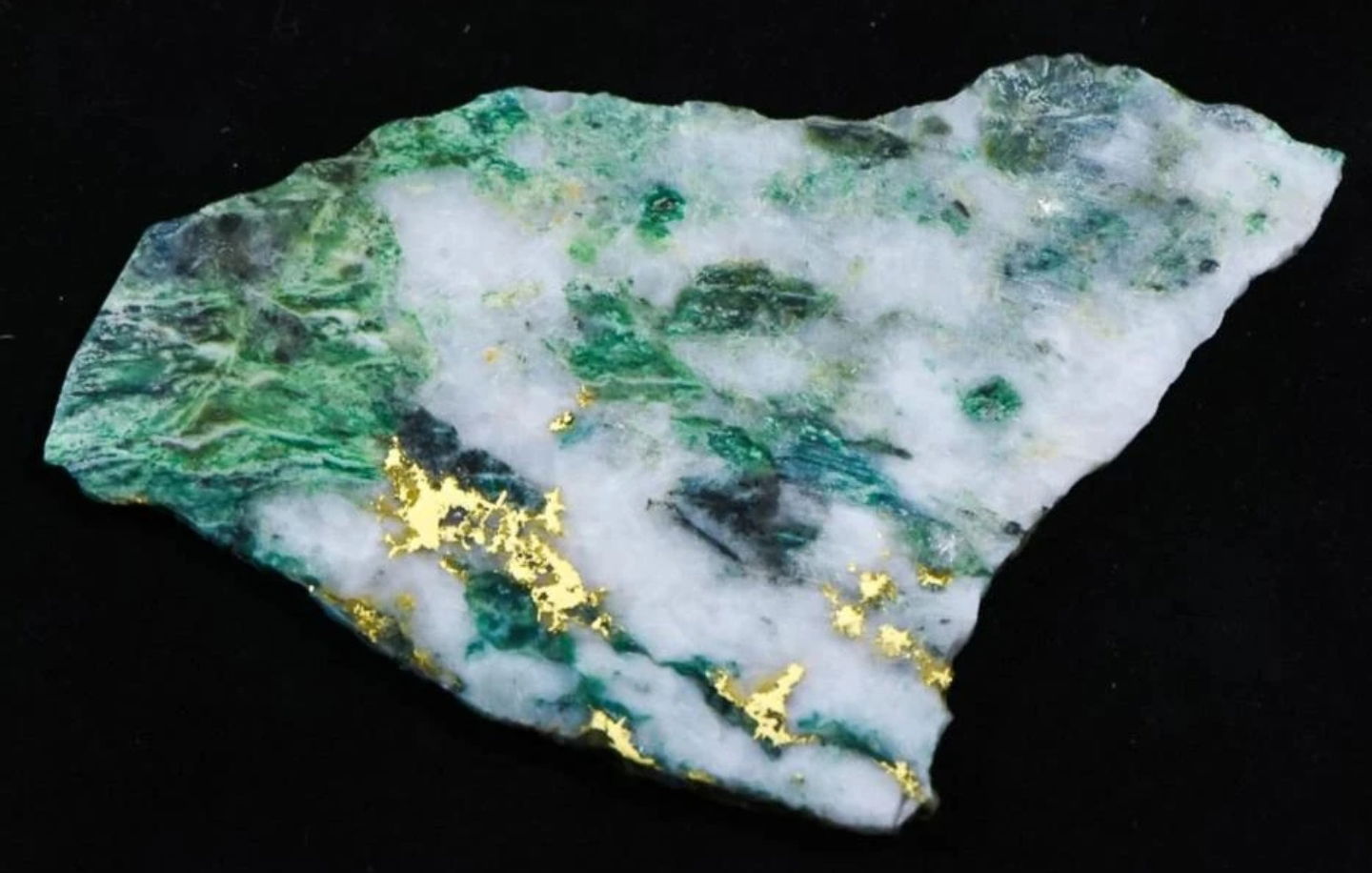
However, it happens that nature is still imbued with surprises and that the elements of chemistry play tricks on the geologist or the engineer who always believe they know everything ...
Surprise and astonishment always come only from the immense territory represented by the game of rock chemistry, in this case there is a temple where the history of gold has crossed that of man j named California ...
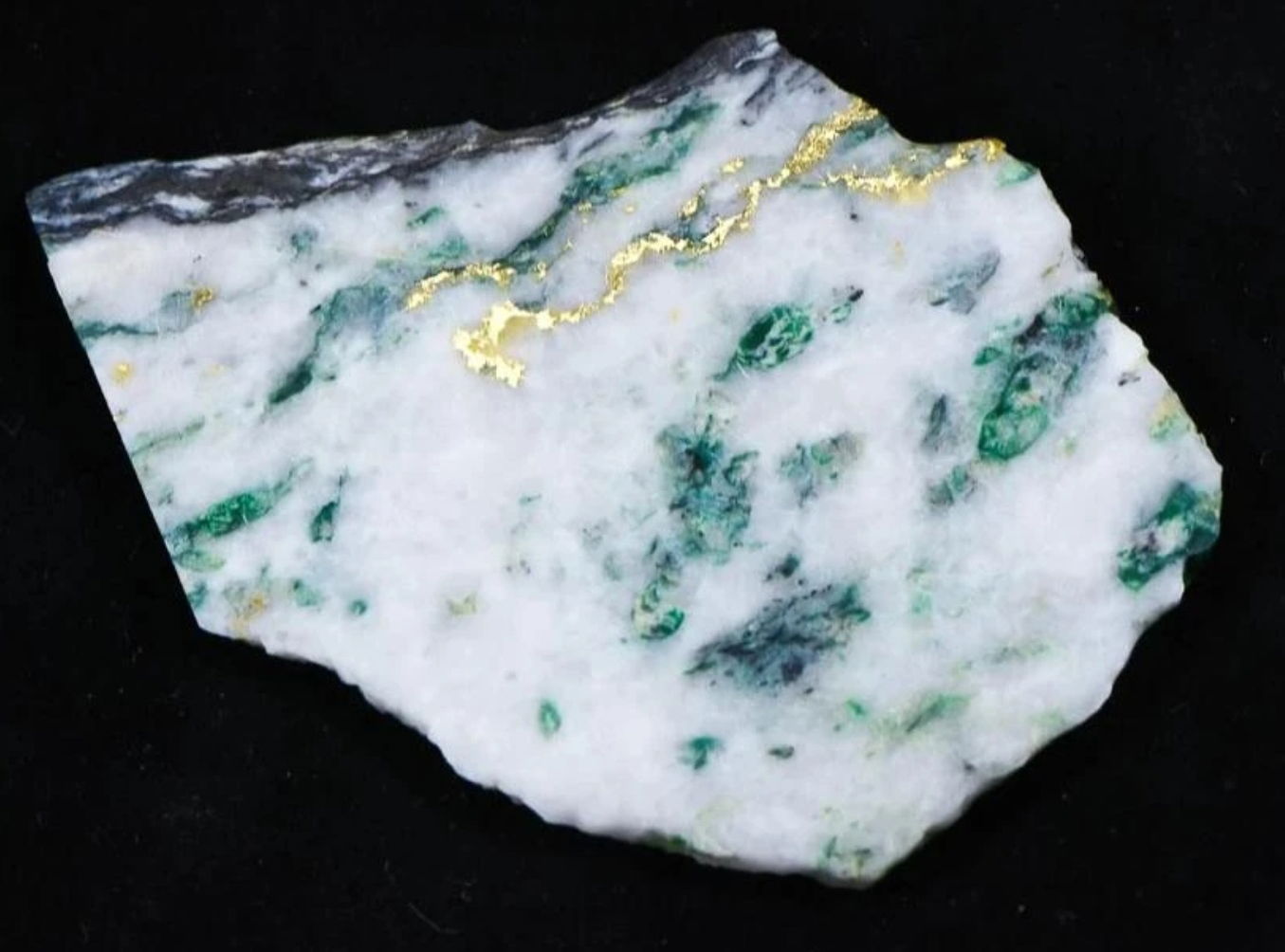
It is in these places that part of the modern history of man and of our world, was played out one day in the fall of 1829, human history, history also of contemporary and modern mineralogy, because in Through this gold rush, a part of the global economic ecosystem will now be born, under the pickaxes of thousands of miners, adventurers, and prospectors from all over the world to try their luck.
After the discovery of gold at Sutter's Mill, in 1848-1849 alone, 76 tonnes of gold will be mined in California in alluvial mining and collecting in placers (alluvial mining areas). It is estimated, however, that only 10-20% of California's gold reserves have been mined.
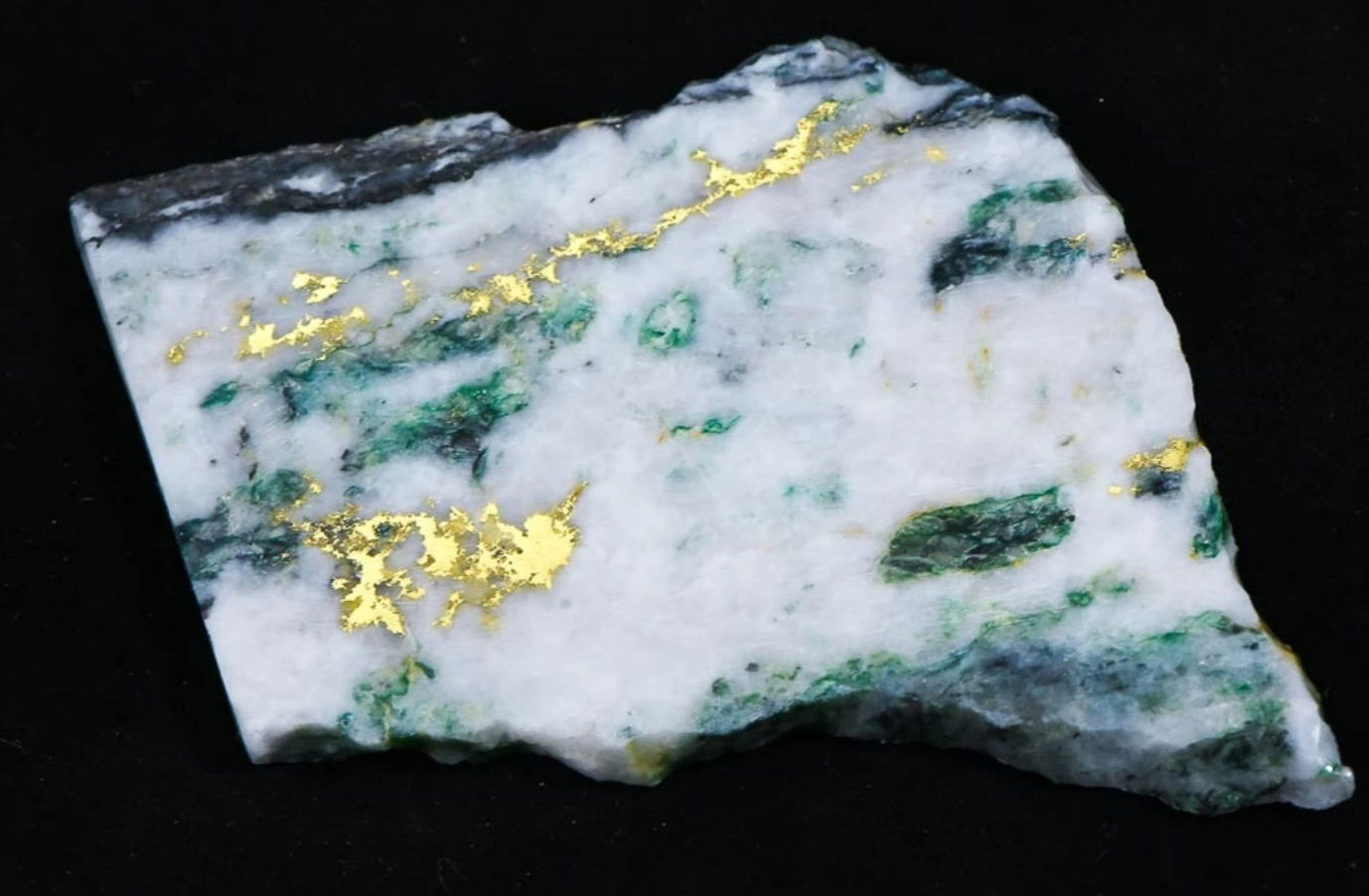
But this gold is buried deep and its extraction would be too expensive.
The first exploitation (alluvial) will therefore leave an immense treasure out of sight until the beginning of the 20th century. Even today
There is still an immense wild territory where legends and stories of sensational discoveries still hover in a mystical fog over these mysterious mountains.
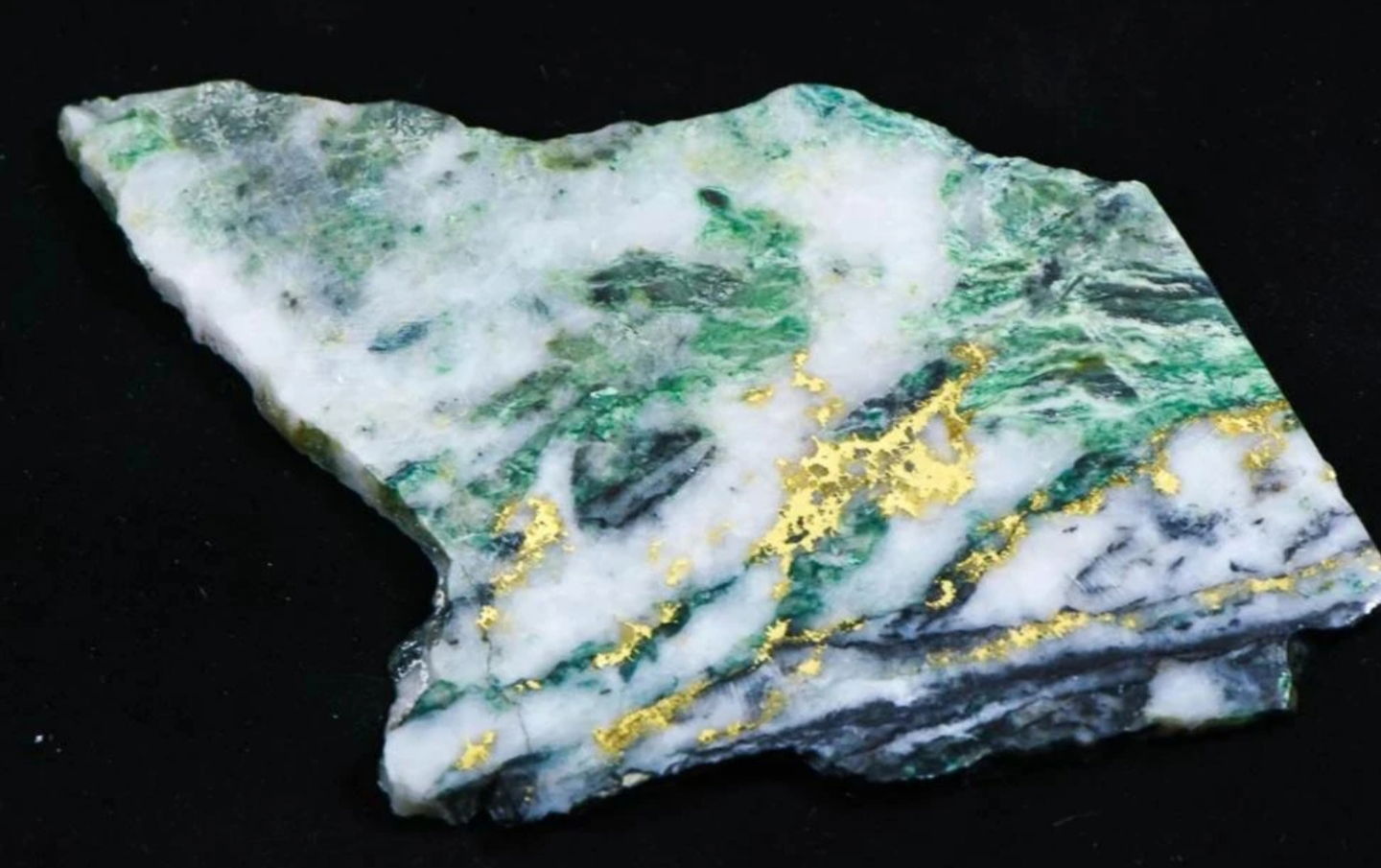
A NEW TREASURE.
It was in 1992 that a fabulous and very rare discovery or "rediscovery" was going to make a gift to mineralogists and geologists all over the world. In the heart of the Sierra Nevada, a rock already on the list of rarities, will unveil an unprecedented treasure in an extraordinary petrographic association.
Under the name “BLUEJAY” we will discover “Serpentine” associated with green and blue Mariposite with gold, an extraordinary composition of a very rare association and of exceptional mineralogical and aesthetic interest. Mariposite is a variety of high chromium phengite which is a discredited name for a series of minerals between muscovite and celadonite. In other words, mariposite is a variety of muscovite rich in chromium.
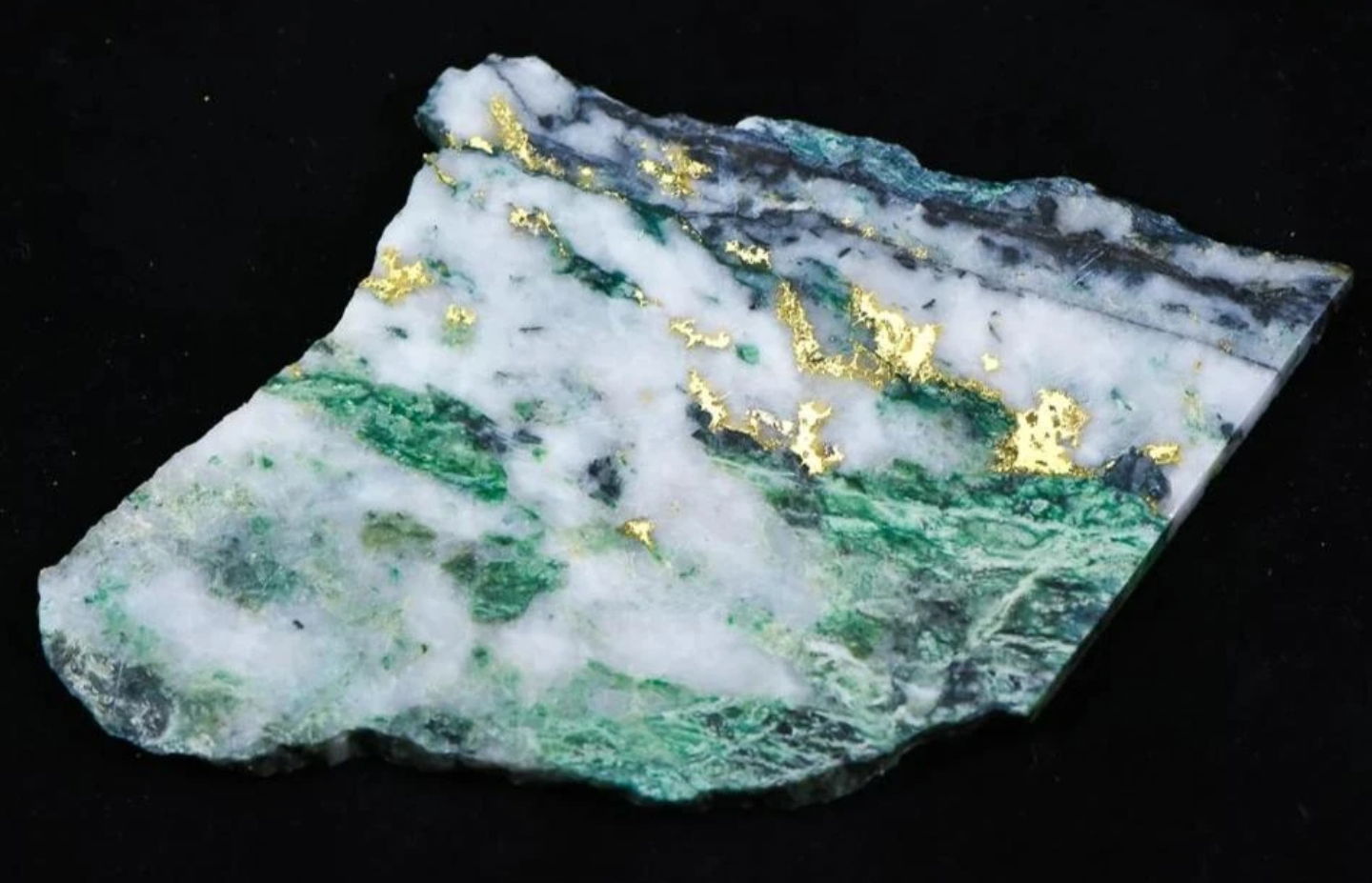
Mariposite is very similar to Fuchsite which is also a variety of Muscovite rich in chromium. Neither Mariposite nor Fuchsite are valid minerals, just varieties of Muscovite.
Mariposite is colored a distinctive green by the presence of chromium and is often found mixed with white dolomitic marble and quartz. Mariposite was named for Mariposa County, California, United States, where it was originally found, although it can be found in several places in the Sierra Nevada Mountains of California. It has also been found in a few places in Newfoundland, Canada, where it is locally referred to as Virginitis.
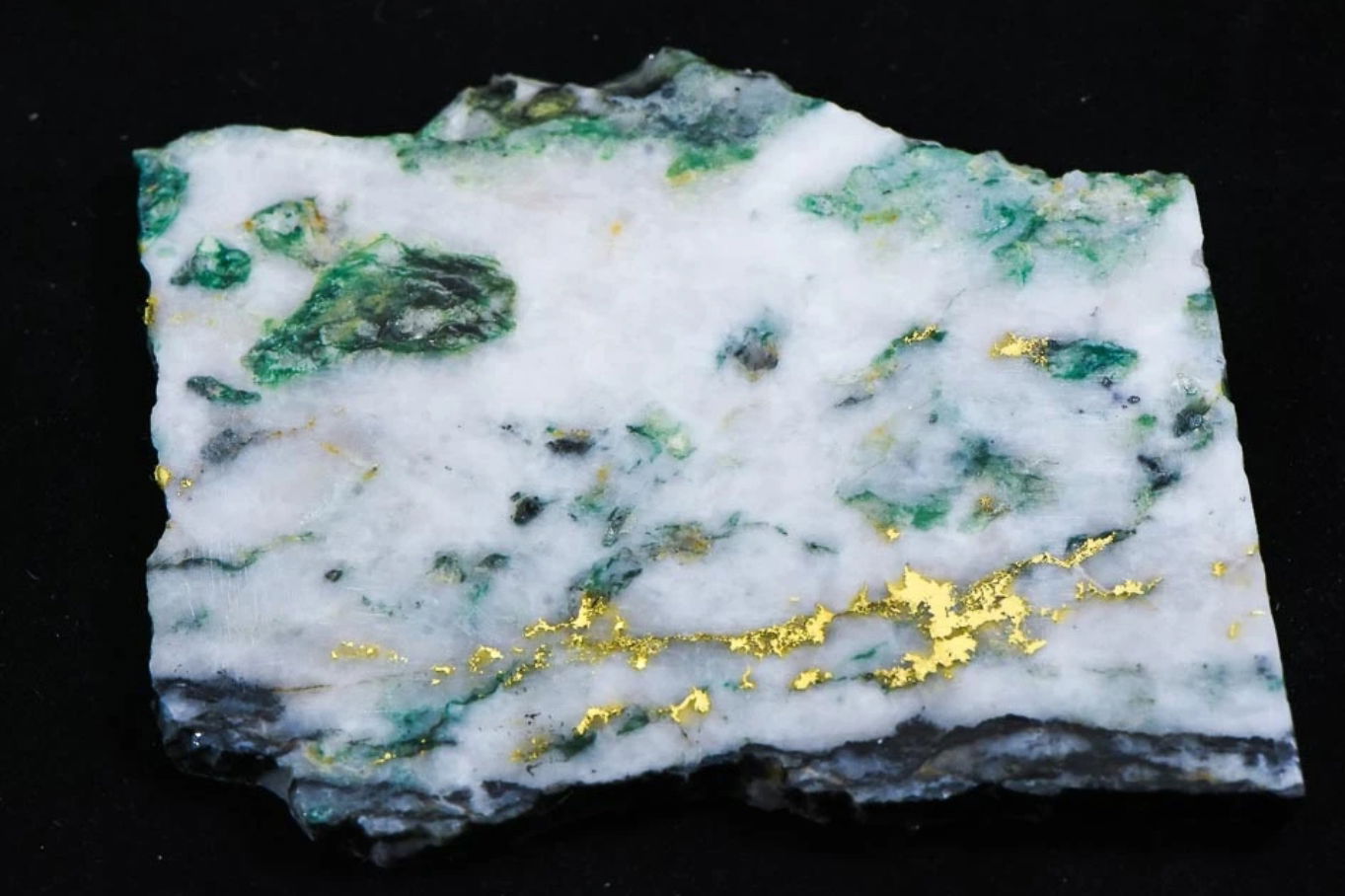
WHAT AMERICANS ARE SAYING.
The association of mariposa with "Serpentine" to "Alleghany" is not like in other areas of the Sierra Nevada Mountain Range. The green of this mineral has been called “BLUEJAY” from the beginnings of hard rock mining by miners to discover gold. It sits near the serpentine and is relatively rare in veins that do not intersect with serpentine masses. In the famous California Sixteen at One mine, the appearance of Blue Jay with quartz has been a leading indicator of presence of gold. "BLUE JAY", which contains small garnet uvarovite crystals with chromed composition, this rock will remain after that discovery, a beacon of exploitation for miners for three centuries. "You rarely find gold in GEAI BLUE "... say the Californians

On April 15, 1992, a specimen weighing over 300 grams was found above the level of 243 meters above the old abandoned mines ...
In November 2019, was carved by a lapidary 38 extraordinary and extremely rare pieces of this treasure delivered by our mother nature ...
"Mythical stone for Indian tributes" The Indians believe that mariposite heals the mind and helps us adapt to new situations easily. May this mysterious rock reduce stress, calm and stabilizes, reduces fear and overwhelmed energy ...
But if other mysteries still invade these mountains where man has shared a bit of magic and a lot of suffering with the gods, there is still something to be discovered ...
I would like to thank GRANT CONNERG, very warmly for the loan of these superb photos of these mineralogical pieces unique in the world...


